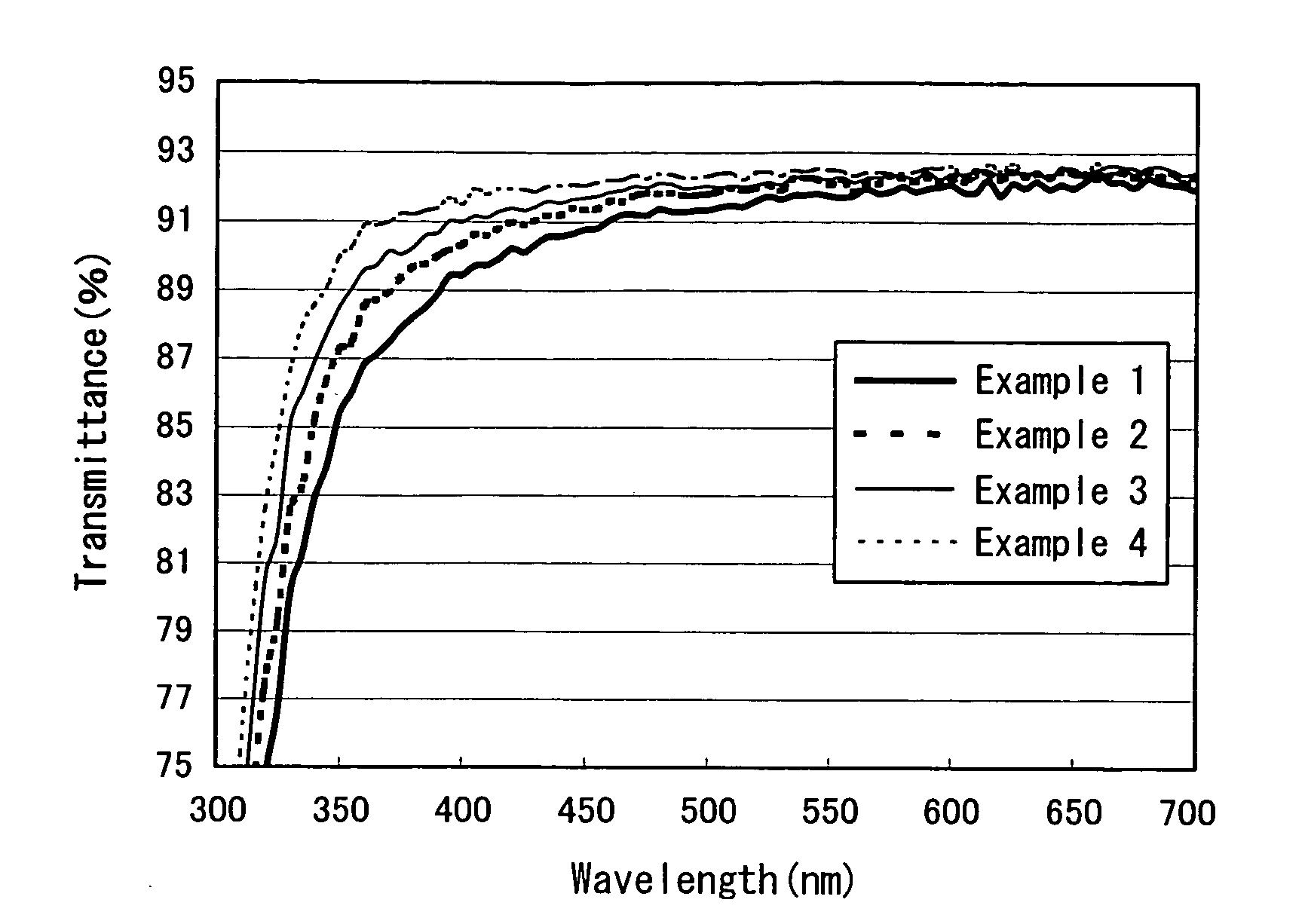Light transmitting substrate with transparent conductive film
- Summary
- Abstract
- Description
- Claims
- Application Information
AI Technical Summary
Benefits of technology
Problems solved by technology
Method used
Image
Examples
example 1
[0049] An ITO film was formed on a glass substrate by a pyrosol method. That is, a borosicilic acid (BLC) glass polished substrate (260×220×0.4 mm) precoated with a SiO2 film (thickness: 10 nm) was placed in a conveyer furnace heated to 500° C. through a belt conveyor and an acetylacetone solution of stannic chloride-indium acetylacetonate containing 12 atomic % of tin atoms was brown into the conveyer furnace using an air as a carrier gas after forming into fog drip, thereby to contact with the surface of the glass substrate and to cause thermal decomposition, and thus an ITO film having a thickness of 12 nm was formed. The resulting ITO film had a surface resistance value of 1.7 KΩ / □. The surface of the film was observed by an atomic force microscope (AFM). As a result, an average surface roughness Ra was 0.7 nm and a maximum surface roughness Rmax was 12 nm. A light transmittance of spectral characteristics of the resulting ITO glass is shown in FIG. 1 and a reflectance is shown ...
example 2
[0050] In the same manner as in Example 1, except that the belt conveyor speed and the amount of the chemical to be atomized were adjusted, an ITO film having a thickness of 10 nm was formed.
[0051] The analytical results of the resulting ITO glass are shown in Table 1, a light transmittance of spectral characteristics are shown in FIG. 1, and a reflectance is shown in FIG. 2.
example 3
[0052] An ITO film was formed on a glass substrate by a pyrosol method. That is, a borosicilic acid (BLC) glass polished substrate (260×220×0.4 mm) precoated with a SiO2 film (thickness: 10 nm) was placed in a conveyer furnace heated to 500° C. through a belt conveyor and an acetylacetone solution of stannic chloride-indium acetylacetonate containing 12 atomic % of tin atoms was brown into the conveyer furnace using an air as a carrier gas after forming into fog drip, thereby to contact with the surface of the glass substrate and to cause thermal decomposition, and thus an ITO film having a thickness of 8 nm was formed. The surface of the film was observed by AFM. As a result, an average surface roughness Ra was 0.8 nm and a maximum surface roughness Rmax was 13 nm. A light transmittance of spectral characteristics of the resulting ITO glass is shown in FIG. 1 and a reflectance is shown in FIG. 2.
PUM
| Property | Measurement | Unit |
|---|---|---|
| Temperature | aaaaa | aaaaa |
| Fraction | aaaaa | aaaaa |
| Transparency | aaaaa | aaaaa |
Abstract
Description
Claims
Application Information
 Login to View More
Login to View More - R&D
- Intellectual Property
- Life Sciences
- Materials
- Tech Scout
- Unparalleled Data Quality
- Higher Quality Content
- 60% Fewer Hallucinations
Browse by: Latest US Patents, China's latest patents, Technical Efficacy Thesaurus, Application Domain, Technology Topic, Popular Technical Reports.
© 2025 PatSnap. All rights reserved.Legal|Privacy policy|Modern Slavery Act Transparency Statement|Sitemap|About US| Contact US: help@patsnap.com



